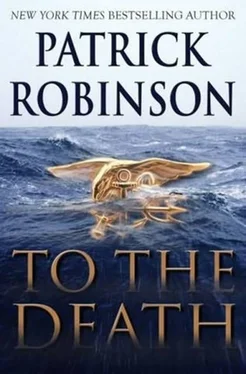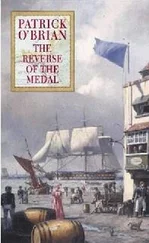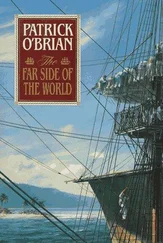No submarine in the world escapes the eagle eye of the United States Navy. The American admirals, without fail, know the whereabouts of every seaworthy underwater boat, nuclear or diesel-electric. Their attention is sharpened when a submarine goes missing from its home base, perhaps having ducked out between passes of the overhead U.S. satellites. Thereafter a swift, penetrating search from inner space is conducted, using secret technology that would make the Russians or the Chinese blink in amazement.
In the case of Iranian Hull No. 901, the Americans tracked her all the way to St. Petersburg as a matter of pure routine. Six months later, they observed her leaving the Russian shipyards, and tracked her easily through the Gulf of Finland, headed east around the coast of Estonia and through the Baltic. She went deep right there, and the U.S. observers merely switched their sights on the narrow Copenhagen Channel through which the Kilo must pass in order to make the open sea.
Captain Abad brought her through right on time, and the Americans watched her run past Norway’s mountainous southern coast, and then into the North Sea opposite the Scottish city of Aberdeen.
It would have been a lot quicker to head down the North Sea and exit the Royal Navy’s home turf through the English Channel. But the Americans knew the Kilo would never do that, and they saw her go deep and make a northern swing around Scotland, finally heading for the open Atlantic, running swiftly past the coast of Northern Ireland and out toward the granite ocean rise of Rockall.
The planners of the U.S. Navy’s Atlantic Command guessed the Kilo would run through the Strait of Gibraltar into the Med and head directly for the northern entrance of the Suez Canal, the shortest route to the Gulf of Oman. They were correct. Almost. But the Kilo made a sudden swerve north, and the next time the Americans picked her up, she was directly off the coast of Lebanon, ten miles west of Beirut.
They had kept a weather eye on her ever since and watched with interest as the Syrian helicopter deposited a passenger on her casing on Tuesday afternoon, July 3. Captain Abad was already running west, and the Americans had, essentially, no goddamned idea where the hell that submarine was going, and certainly no clues about the intentions of her commanding officer.
They picked her up snorkeling, around midnight on Wednesday, July 4, and kept a loose fix on her all the way to Marsala. The ops room of the Cheyenne knew where Captain Abad was on the GPS, accurate to about thirty feet.
On this Saturday evening, the U.S. submarine was around fifty miles south of the Sardinian port of Cagliari. Her task was to locate the Kilo and then track her to the gateway to the Mediterranean, the Gibraltar Strait, and then let her head out into the Atlantic where another U.S. nuclear boat would follow her into really deep water.
It had not been definitely decided to sink the Kilo, but opinion in both the White House and the Pentagon was certainly swaying in that direction. There were a couple of firebrands among the Navy top brass who were perfectly happy to take her out in the deepest waters of the Med, but there was something irresistibly local about that area.
Ships from North Africa, Spain, France, Italy, and Great Britain, warships, freighters, tankers, and cruise liners ply their trade through here. And in general terms, the American Navy brass were more comfortable opening fire in the vast, bottomless anonymity of the Atlantic, where no prying eyes would ever catch a telltale sign of a submarine split asunder by a Mark 48 torpedo.
Captain Abad was oblivious of the mindset of his enemies, unaware that anyone even knew he had left Beirut, and he was certainly not contemplating the possibility of instant death and the destruction of his newly refurbished submarine.
The Iranian would be well past Marsala before he even found out that the Cheyenne was patrolling these waters. The Kilo would be at periscope depth, with its air intake above the surface, when Commander Hank Redford’s sonars gained POSIDENT, and the Cheyenne could begin to move in closer.
0900 Saturday 7 July Dublin, Ireland
Shakira Rashood waited in St. Stephen’s Square for her hired chauffeur to arrive. She had been in the Shelbourne Hotel for three and a half days, which she considered to be quite long enough even for a girl as unobtrusive as Maureen Carson of Michigan, who had died several years previously in Bay City up on the shores of Lake Huron.
Shakira had been furnished with this information when she was given her second forged U.S. passport. God alone knew how the forgers had laid hands on the data, but somehow they had. And so far as the Shelbourne Hotel was concerned, Maureen Carson had just checked out, having scarcely left the premises during her entire stay.
Mrs. Rashood had made her own car-rental arrangements with the Iranian embassy, which had offices on Mount Merrion Avenue at Black-rock, on the south side of Dublin. The embassy overlooked the Irish Sea, beyond which lay the shores of England.
She had liked the Shelbourne, and indeed had dined there each night, once falling into conversation with a very cheerful sixtyish Irishman at the next table who told her he was in town for the Irish Derby, the million-dollar classic run each year in early July.
Shakira had wanted to know where, in a busy city like Dublin, did they have room to run a major horse race. The Irishman, whose name was Michael O’Donnell, explained it was run on the Curragh, a few miles outside the city, in County Kildare, Ireland’s most historic racecourse being set on a massive swath of grazing land that dates back to Roman times.
“And how far did you come to see this horse race?”
“More than a hundred miles,” said Michael. “I’m up from County Tipperary. I breed a few thoroughbreds down there.”
“And is one of them running in the Irish Derby?”
“Not exactly. But a colt named Easter Rebel is. And I bred him. I still own the mare, Mighty Mary, and she has a filly foal at foot. I’ll get a big price for her if the Rebel goes well.”
Shakira, unsurprisingly, did not understand one single word of that. But she was one of those people who cannot bear just to say, “How interesting,” and move on. Shakira Rashood had to know precisely what was happening.
Of course, she was so endearingly beautiful that she was, generally speaking, indulged, especially by men, and particularly by important men, from terrorist commanders to Irish stud farm owners. Women blessed with great beauty live by an entirely different set of rules.
“You mean a mare named Mighty Mary is the mother of Easter Rebel?”
“Precisely. I sold him as a yearling, but he won four races when he was two, and two more this past spring, one of them a group race over a mile and a quarter in England.”
“Does that mean they all run together-a group race?”
And so on, until Shakira thoroughly understood that Mr. O’Donnell’s broodmare Mighty Mary would be very valuable if Easter Rebel should win the Irish Derby, and that her foal, the filly, could go on to be an excellent racer if she could run half as fast as her brother.
“She’s what’s known as a full sister,” said Mr. O’Donnell. “Same father, same mother.”
“I assumed they all had the same father and same mother,” said Shakira. “Is this like a marriage with horses?”
Michael O’Donnell laughed. “Hell, no!” he said. “We switch ’em around all the time, breeding the mares to any stallion who takes our fancy.”
“What if she doesn’t like him?”
“Oh, we tether ’em good and well so they can’t escape, and then bring the stallion in at precisely the right moment in her cycle.”
Shakira looked shocked. “But that’s terrible,” she said. “What if Mighty Mary hates every moment of it? That’s rape.”
Читать дальше












